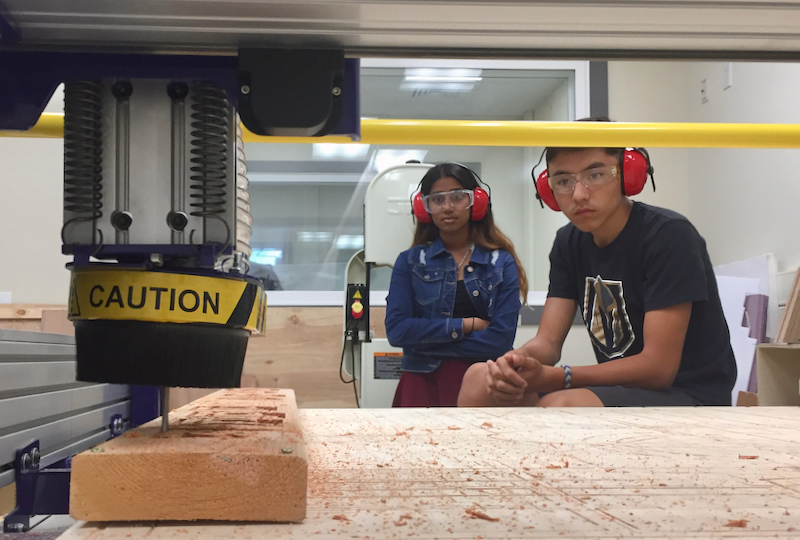May is Asian American and Pacific Islanders (AAPI) Heritage month in the United States, and this month we celebrate AAPI makers, educators, and fabbers in our community of practice and beyond. To learn more about the history of this month of celebration, click here.
I recently sat down with Laurie Toyama who grew up in Hawaii surrounded by an integrated AAPI culture where the people reflected “a real melting pot” and she herself fit right in. We spoke about her journey from Hawaii to the tech industry in California to Santa Clara High School where she teaches for the 49ers STEM Leadership Institute in the school’s Fab Lab. Laurie was a successful software engineer in Silicon Valley and when she realized that she had a passion for teaching others, she began leading trainings within the industry and working with new college grads. Though she enjoyed the work with these young professionals, she often thought to herself, “What if I had gotten to them earlier?” Fast forward a few years later and Laurie is working with high school students.

Fablab Santa Clara High School is located in Northern California with a diverse population of students including 35% Hispanic and 22% Asian students. The learning that happens in the lab challenges these students to solve problems and frame solutions in support of the community outside of the Fab Lab so students of all backgrounds are able to see themselves reflected in these broader projects.
This culturally relevant learning environment is important to all students, especially the underrepresented students, though Laurie says that in the lab “the kids don’t see it as their culture, it’s just there- who they are and what their environment is- and they just bring that into the lab.” As educators we may label it as culturally relevant teaching and learning, but as students, they see their participation in these solutions as “being true to who they are.” The Fab Lab is a great space for students to bring themselves into the work, and the lab staff at Santa Clara High School is often bringing in outside resources and partnerships to underline those local connections.
For instance, the students were challenged to rethink an abandoned lot near the school as one design thinking project in the Fab Lab, and Laurie was especially impressed with the excitement this local connection sparked in the students. One of the most comprehensive plans integrated a localized Indian market which was important to the students on a much deeper level than just design solutions. In these projects, students are able to connect in ways that extend beyond the computers and machines and see themselves and their interests reflected in class assignments.

Educational Fab Labs and making have a unique way of connecting local communities and student learning, making learning opportunities hands-on and engaging for students. To learn more about this historical connection, read the blog post “Carter G. Woodson’s Culturally Responsive Pedagogy Meets Seymour Papert’s Constructionism.”
Though the reflective work on culture is important to students from any marginalized background, Laurie points out that these students, like any other high school kids, have a different point of view, “To them, it’s not a culture or a heritage thing, it’s just who they are!”

